Stimulus in the suburbs: Here's how Akron's biggest neighbors are spending ARPA cash
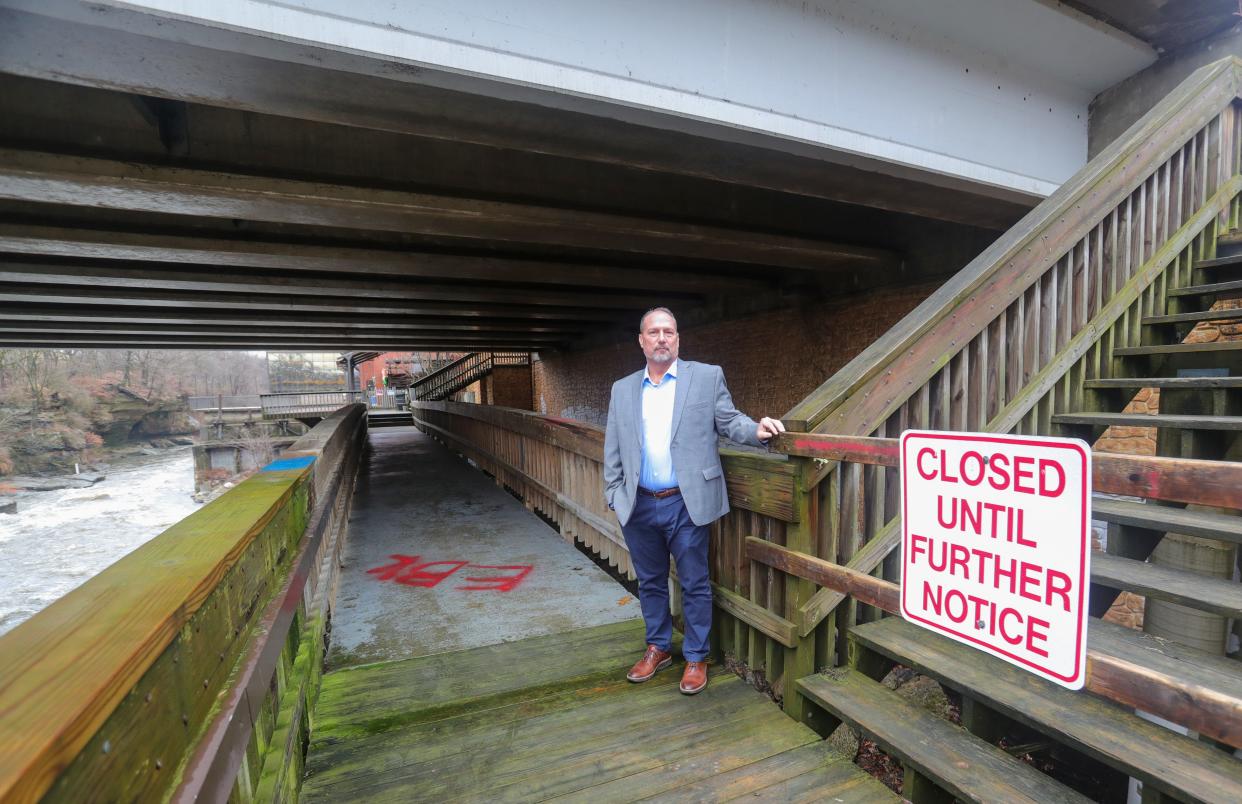
A new waterline in Hudson. Fire department upgrades in Stow. Road improvements in Cuyahoga Falls. Flood-control measures in Barberton. Federal stimulus funds created in response to the COVID-19 pandemic are helping communities to pay for these projects and more.
The American Rescue Plan Act set aside $350 billion in emergency funding for state, local, territorial and tribal governments. Of this amount, $130 billion was distributed to local governments. An additional $10 billion was budgeted for capital projects for states, territories and tribes for projects such as broadband infrastructure, according to information from the U.S. Treasury Department,.
The grant gives local governments until Dec. 31, 2024, to budget the money and Dec. 31, 2026 to spend it.
No other city in Summit County came close to the $145 million in ARPA money awarded to Akron. And unlike Akron, where Mayor Dan Horrigan has leeway to distribute the stimulus funds without requiring a vote, each of the city's largest neighbors has required City Council approval for proposed stimulus recipients. Akron provides an online dashboard tracking its ARPA spending.
But how have other communities used their stimulus? The Beacon Journal reached to the county's other most populous cities to ask how they've spent — or plan to spend — their ARPA funds. Here's what we found out:
Stimulus quandary:How did Akron City Council get cut out of approving ARPA spending?
ARPA and the schools:Teacher raises will cost Akron schools $12M. Can federal stimulus funds help pay for them?
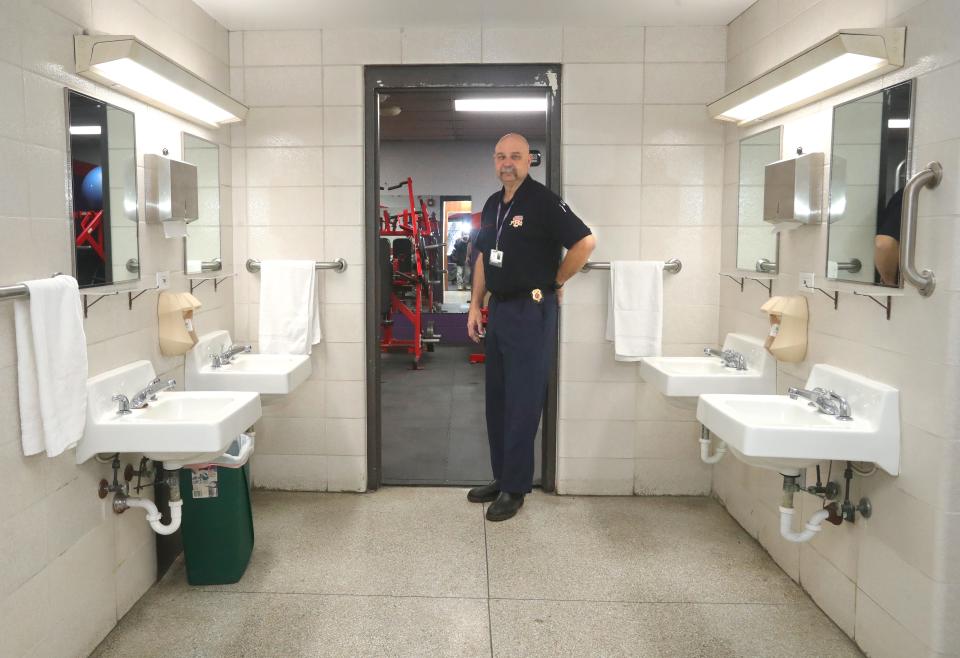
Barberton: Street repair project and fire station renovations
ARPA amount received: A little more than $16.4 million, according to Barberton Finance Director Jeremy Flaker.
Major projects: City Council has approved repairs to South Van Buren Avenue from Snyder Avenue to Russell Avenue, include replacing the waterlines and install storm sewers. The project is estimated to cost around $5 million.
Michael Teodecki, Barberton's service director and city engineer, said the project is in its final plan development and engineering stages. Construction could start by late spring and then would be expected to last the rest of the year.
"This project will assist with reducing flooding in this area when the project is complete," Teodecki said, adding that it one of three projects the city has in the works to control flooding issues.
Other expenditures: Purchasing a new ambulance and senior center passenger bus, installing a new waterline in a low and moderate income neighborhood, improvements at the wastewater plant, and renovating the living quarters at the main fire station. The city also plans to purchase leak detection equipment so city officials can find water main breaks more easily. One project that was completed was upgrading the lighting at the sports complex, Flaker said. The city also opted to classify $10 million of its ARPA allotment as revenue loss, he said.
According to information from the National League of Cities, local governments can claim up to $10 million in lost revenue under the grant. Flaker said that option allows the city greater flexibility to fund projects with ARPA money beyond the budgeting deadline at the end of 2024.
"Basically, we wanted to make sure we didn’t lose any of the money potentially," he said.
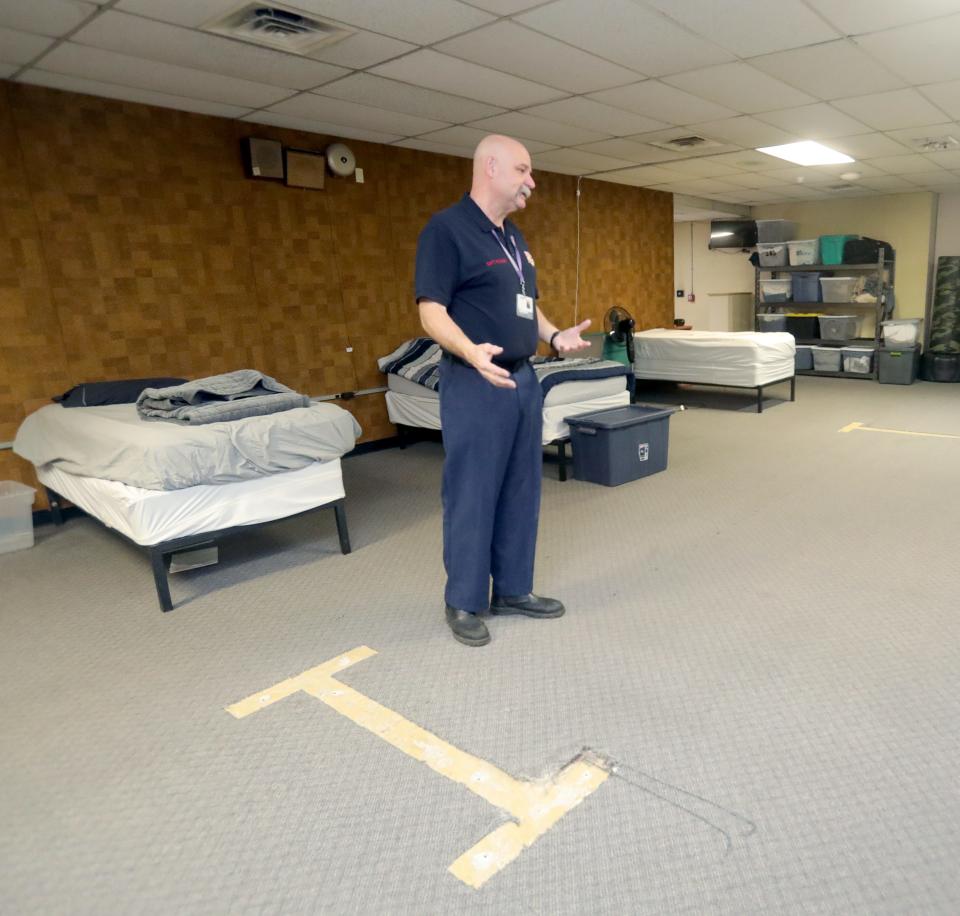
Stow: Stimulus helps to pay for firetruck and overtime costs
ARPA amount received: About $3.65 million, according to city officials. Stow has allocated $1.9 million so far and will decide how to spend the rest of it this year.
Major projects: The fire department is receiving a significant boost from the funds, with $749,355 to purchase a firetruck and $200,000 to pay for overtime costs. Calls for service have increased in the past four years, from 4,691 calls in 2019 to 5,067 calls in 2022, Law Director Jaime Syx said.
Other expenditures: The city installed 1,600 feet of storm sewer lines in November to drain about eight acres along Englewood Drive and across Park Drive into the Wetmore Detention Pond. This cost $197,205.
Stow also spent $193,236 to install a trihalomethane removal system to its water system in October. According to the Centers for Disease Control and Prevention, trihalomethanes, or disinfection byproducts, are formed when chlorine or bromine interacts with the natural organic materials in water.
Temporary SNAP boost disappearing:SNAP emergency allotments ending in Ohio in February
New park addition:National Park Service purchases former Brandywine golf course from Conservancy for CVNP
In addition, the city spent $45,604 on communications software.
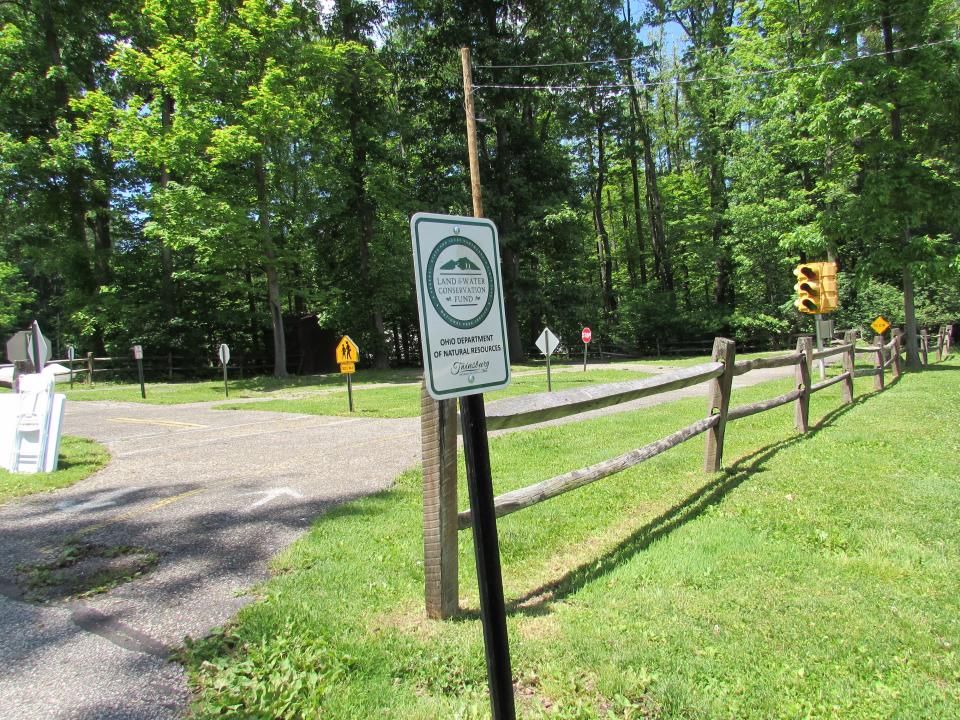
Twinsburg: Street, sanitary sewer and Safety Town upgrades
ARPA amount received: Nearly $2 million, according to Sarah Buccigross, the city's finance director.
Major projects: City Council has approved some ARPA spending and will continue to do so, Buccigross said. Amy Mohr, the city engineer, said $385,000 in stimulus money will help to pay the more than $2 million cost of Dooridge Drive improvements. That work will include replacing the sanitary sewer, installing an 8-inch water main, new hydrants and storm sewer upgrades and replacement, Mohr said. Work is expected to go from March through September.
Other expenditures: The city is putting roughly $25,000 toward creating a new Safety Town. Jennifer Betenson, the parks and recreation director, said the program will eventually be moved from Glen Chamberlin Park on Ravenna Road to Glen Meadow Park on East Idlewood Drive.
Hudson: Whole ARPA grant goes toward waterline project
ARPA amount received: $2.3 million, according to Jody Roberts, Hudson's communications manager.
Major projects: The entire stimulus allotment is being used toward waterline replacement along a part of state Route 303, Roberts said. The city is replacing lines from the Hudson Water Treatment Plant at 572 W. Streetsboro St. to East Streetsboro Street at Boston Mills Road.
Construction is expected to start in the spring and last through the summer, Roberts said.
Tallmadge: Improvements for park facilities and new sidewalks
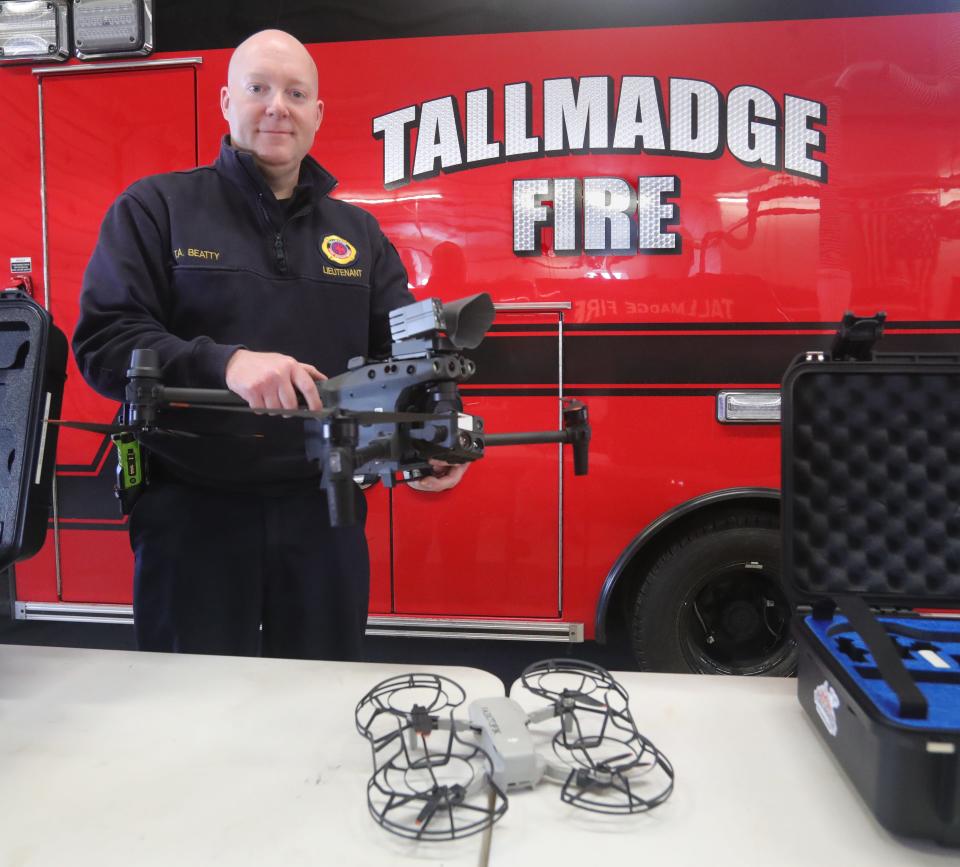
ARPA amount received: $1.8 million, according to Millie Gilbride, Tallmadge's director of finance.
Major projects: The city is replacing the restrooms at Howe Road Park ($500,000), installing sidewalks on from North Munroe Road to the front entrance roundabout at Tallmadge High School ($288,501) and setting apart a new dog park area at Jaycee Howe Road Park ($257,310).
"We are still in the design phase for the dog park because we’ve moved its location within the park," Gilbride said. "We will have separate areas for small dogs and large dogs and will have some shaded areas."
Other expenditures: Search and rescue missions led by public safety services will be easier with the $51,398 purchase of seven Small Unmanned Air Systems — or drones. These drones can be issued for building searches and barricaded subjects; another $8,000 was budgeted in 2023 for operating purposes such as batteries and liability insurance.
The city also is spending $106,316 to resurface tennis courts and install pickleball courts at Lions Park, with another $94,522 to add an outdoor pavilion with a capacity for about 80 people at the park. And it earmarked $39,071 for a new electronic community bulletin board on Tallmadge Circle and $16,384 to install streetlights on Southeast Avenue from Tallmadge Circle to Munroe Road.
Green: Ongoing road projects receive a boost
ARPA amount received: $2.7 million, according to Steven Schmidt, Green's finance director.
Major projects: Green City Council also approved $2.54 million in ARPA grant for its road infrastructure projects, Schmidt said. Approved projects include work on Massillon Road from Boettler Road to the roundabout; Massillon Road to Corporate Woods Circle; Arlington and Greensburg roads intersection improvements; and a guardrail replacement on Christmas Road.
Other expenditures: Green used about $158,000 to purchase and install ionization units to improve air quality at city facilities.
Tribute to the river:Creator of Merriman Valley statue revisits river's legacy with Cuyahoga Falls sculpture
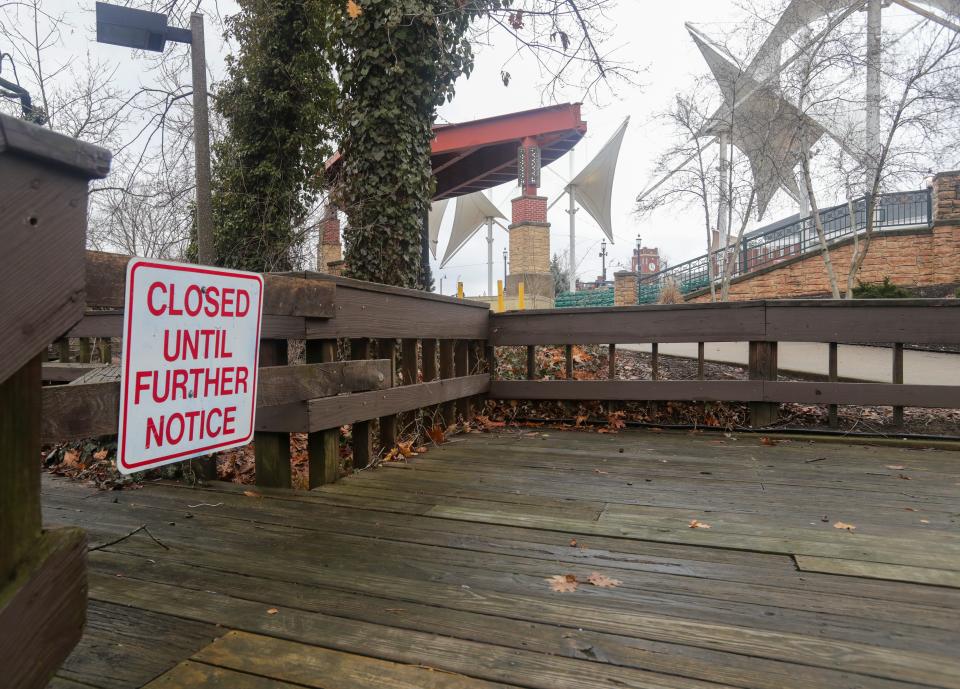
Cuyahoga Falls: Front Street revitalization and boardwalk accessibility
ARPA amount received: $16.5 million, according to Carrie Snyder, director of Neighborhood Excellence, Communications, and Community Outreach.
Major projects: Road and infrastructure improvements figure largely into Cuyahoga Falls' ARPA spending, including $4.5 million to revitalize South Front Street south of Broad Boulevard, Snyder said. The city is spending $3.2 million to improve Cochran Road, $3.1 million to design the downtown boardwalk and make it more accessible and a little more than $2 million on a replacement storage building for the street department in northern Cuyahoga Falls.
Other expenditures: The city also is devoting about $2 million to launch the Community Improvement Corporation of Cuyahoga Falls Revolving Loan Program, Snyder said. Another $923,106 will be put toward a fire department training facility that the city is designing. The city also used $377,225 to extend a waterline into its joint economic development district with Boston Township just north of the city's boundary along Akron-Cleveland Road. And Cuyahoga Falls is also using ARPA money to help fund its continuing public arts program.
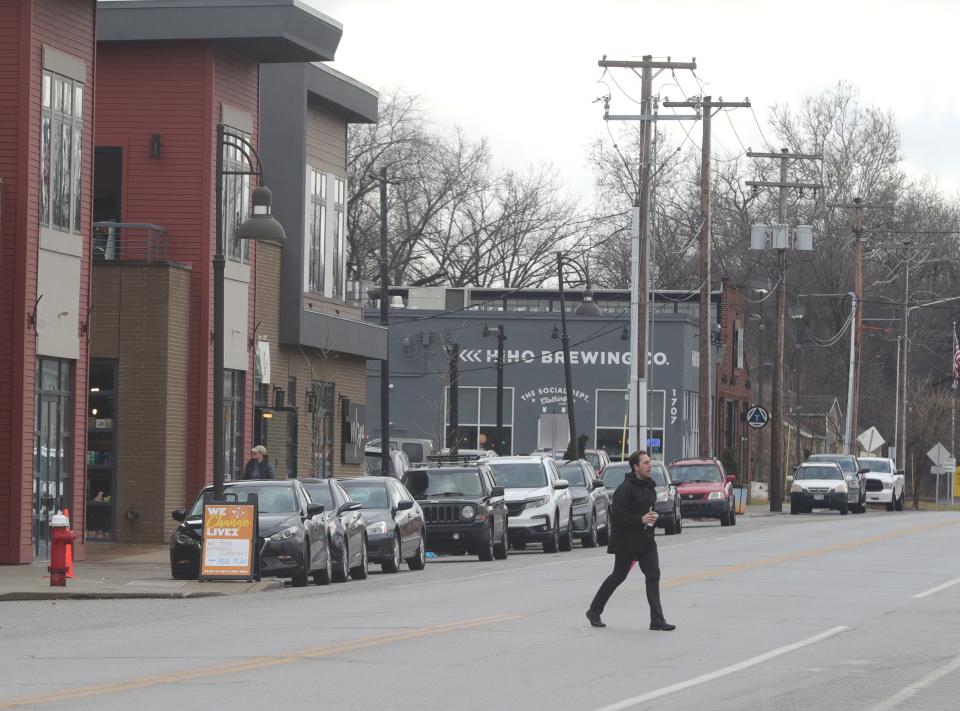
Reporter April Helms can be reached at ahelms@thebeaconjournal.com
This article originally appeared on Akron Beacon Journal: Here's how Summit County cities are spending their ARPA cash

